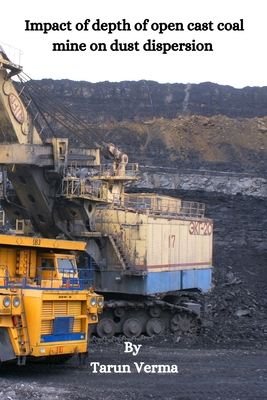You are here
Back to topImpact of depth of open cast coal mine on dust dispersion (Paperback)
Currently Backordered
Description
Dust pollution due to mining activities is drawing greater attention as the awareness in the society is increasing about the environmental issues. Dust pollution is generally characterised by suspended particulate matter. Suspended particulate matter (SPM) generated from the different mining operations in a mine is a serious threat to the health of manpower as well as to the local community. Air pollution is one of the common environmental problems as faced by the management of surface mines. Due to demand to increase the production of the mineral and coal, there is a requirement to increase the capacity of the working machineries or use the high capacity heavy earth moving machineries. This leads to generation of more SPM which is likely to affect the environment severely. It has been assessed (Gautam et al., 2012) that surface mine has been responsible for creating more impact on surrounding environment as compared to underground mining methods in the same area. In every surface mining method, starting from the surface of the earth till reaching to the ore deposit or coal seam, all activities are performed in open atmosphere which leads to higher degradation of the environment. In underground mining, all major activities are carried out beneath the earth surface and nothing is exposed to the surface environment and consecutively deterioration of the environment is very less in comparison to that of by surface mining methods. Dust is generated during all phases of exploitation and processing of mineral from fugitive sources in surface mines such as shovelling, ripping, drilling, blasting, transport, crushing, grinding, screening, and stockpiling etc. Health impacts from dust emissions are related to the main components of dust (silica, silicates, carbonates), as well as to rock impurities and trace components (asbestos etc.), those can cause serious diseases like pneumoconiosis, silicosis, asbestosis etc. (IFC, 2006). Surface minerals extraction and processing operations can generate large quantities of fugitive dust that, when released in an uncontrolled manner, can cause widespread nuisance and potential health concerns for on-site personnel and surrounding communities. Typical fugitive dust emission sources may include minerals transfer points, conveyance, loading into crusher feed bins, haulage and blasting (Appleton et al., 2006). Vehicular traffic on unpaved haul roads of the opencast mines has been identified as the most prolific source of fugitive dust (Sinha et al., 1997). Excessive dust generation from such haul roads is a problem common to most surface mining operations especially in semi-arid and arid areas.
